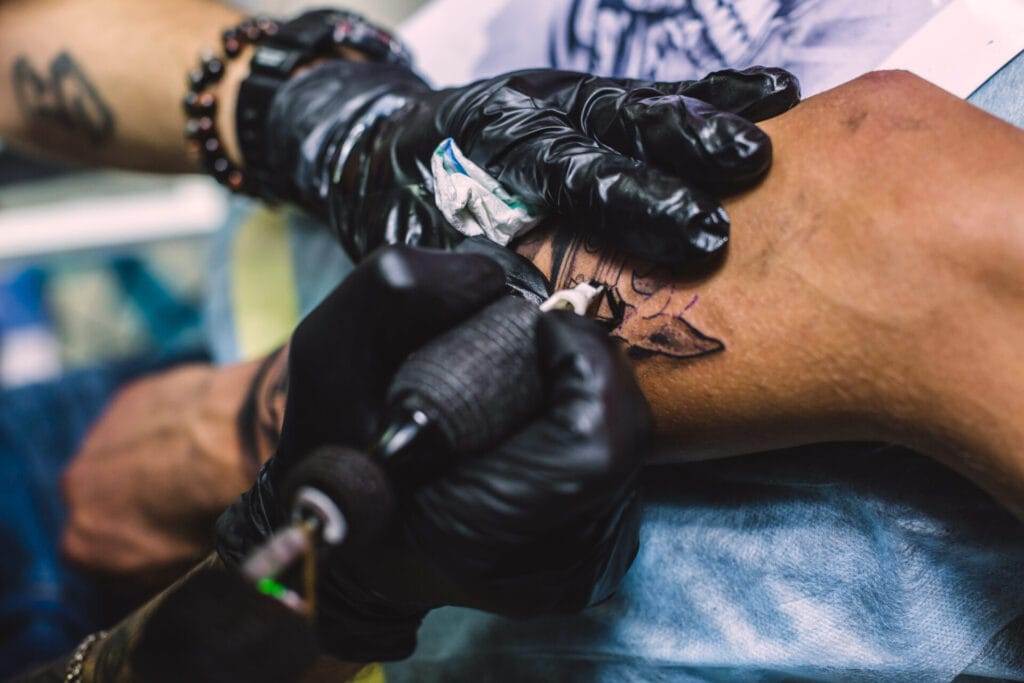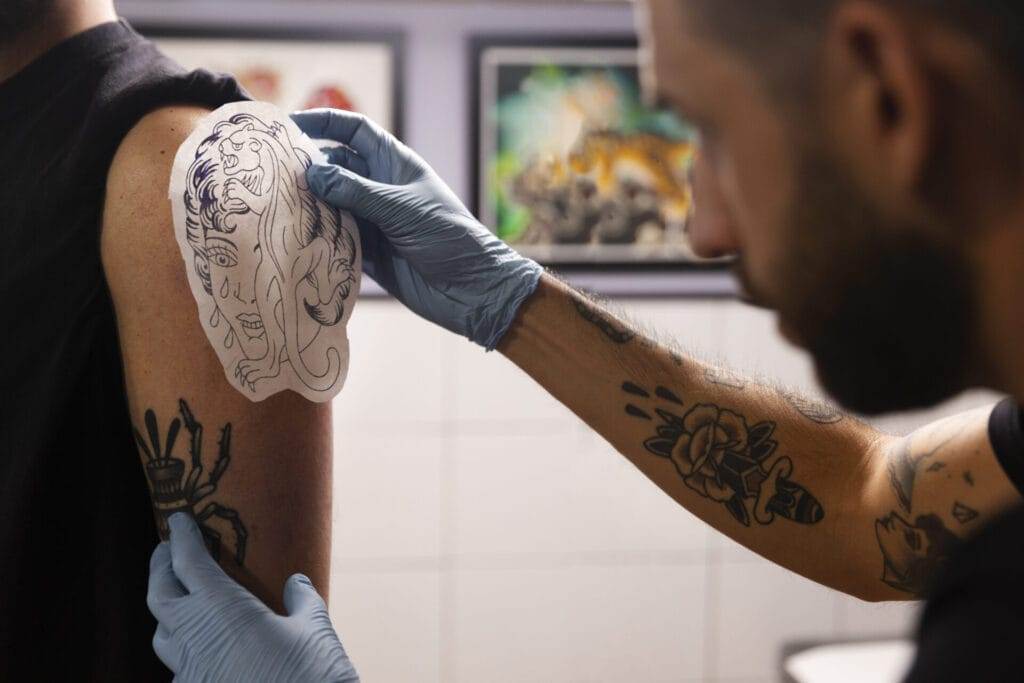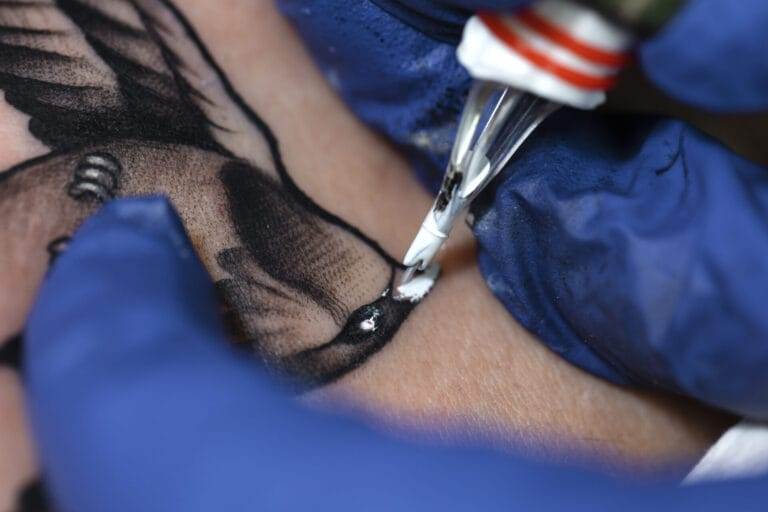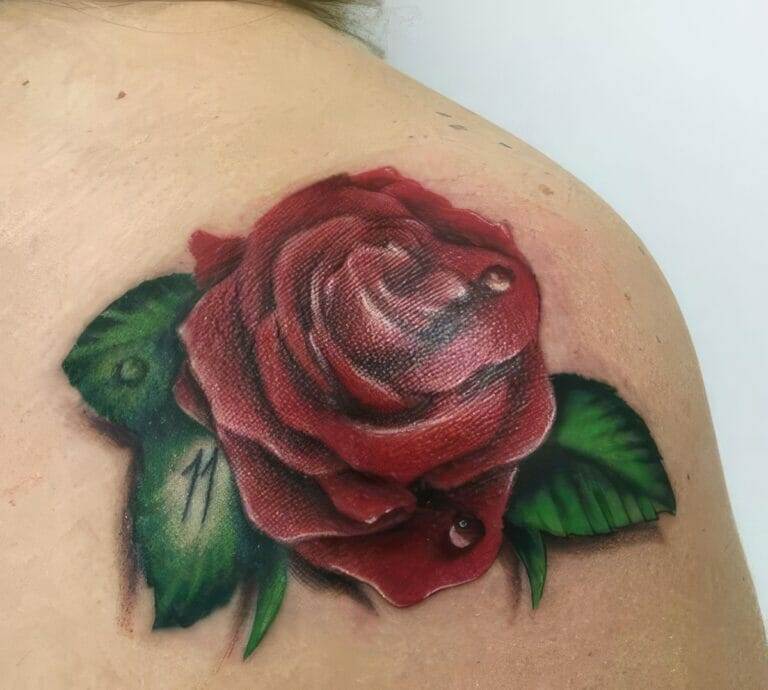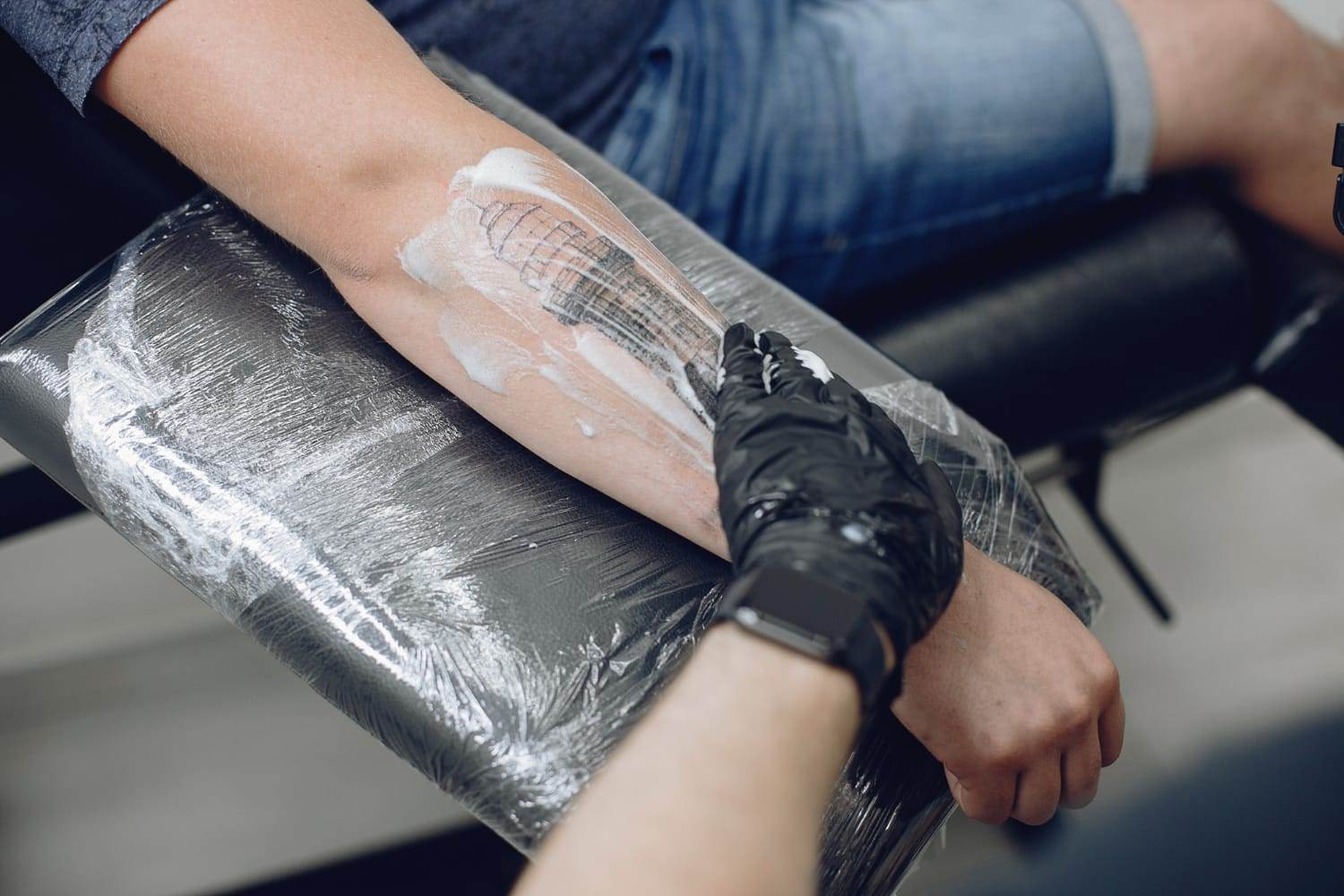
Illustrative tattoos have become increasingly popular in recent years, with more and more people choosing this style to express themselves through body art. Unlike traditional tattoos, which often feature bold lines and solid colors, illustrative tattoos are characterized by intricate details, shading, and a more realistic or artistic approach. These tattoos are often inspired by various art forms such as paintings, drawings, and illustrations. They can depict anything from animals and nature to portraits and abstract designs.
Illustrative tattoos are considered an art form because they require skill, creativity, and a deep understanding of design principles. Tattoo artists who specialize in this style must have a keen eye for detail and the ability to translate their clients’ ideas into a visually stunning piece of art on the skin. The process of creating an illustrative tattoo involves careful planning, sketching, and meticulous execution. Each tattoo is unique and tailored to the individual’s preferences and desires.
The Power of Personal Expression through Tattoos
Tattoos have long been recognized as a form of self-expression. They allow individuals to showcase their personality, beliefs, interests, and experiences through a permanent work of art on their bodies. For many people, getting a tattoo is a way to commemorate significant life events or milestones. It can serve as a reminder of personal growth, overcoming challenges, or honoring loved ones.
Illustrative tattoos offer a wide range of possibilities for personal expression. Whether it’s a small symbol with deep meaning or a large-scale piece that tells a story, these tattoos can convey emotions, values, and aspirations. Some people choose illustrative tattoos that reflect their cultural heritage or spiritual beliefs. Others opt for designs that represent their favorite hobbies or passions. The possibilities are endless, allowing individuals to create a truly unique and meaningful piece of art on their skin.
The History of Illustrative Tattoos and Its Evolution
Tattoos have a rich history that dates back thousands of years. They have been found on mummies, ancient artifacts, and in various cultures around the world. In the past, tattoos were often associated with tribal rituals, status symbols, or religious practices. However, the art of tattooing has evolved significantly over time.
Illustrative tattoos, as we know them today, have their roots in traditional tattooing styles. These styles often featured bold lines, solid colors, and simple designs. However, as tattooing became more mainstream and accepted as an art form, artists began to experiment with different techniques and styles. This led to the emergence of illustrative tattoos, which focused on intricate details, shading, and a more realistic or artistic approach.
In recent years, illustrative tattoos have gained popularity due to advancements in tattooing equipment and techniques. Tattoo artists now have access to a wider range of colors and tools that allow them to create more intricate and detailed designs. Additionally, social media platforms have played a significant role in showcasing the work of talented illustrative tattoo artists, further fueling the demand for this style.
The Different Styles of Illustrative Tattoos
Illustrative tattoos encompass a wide range of styles, each with its own unique characteristics and aesthetic. Some of the most popular styles include traditional, neo-traditional, and watercolor.
Traditional illustrative tattoos are inspired by classic tattoo designs that originated in the early 20th century. They often feature bold lines, solid colors, and iconic imagery such as anchors, roses, and swallows. Traditional illustrative tattoos have a timeless appeal and are known for their boldness and simplicity.
Neo-traditional illustrative tattoos build upon the traditional style by incorporating more intricate details and shading. They often feature elements from nature such as flowers, animals, and landscapes. Neo-traditional illustrative tattoos are characterized by their vibrant colors and realistic or artistic approach.
Watercolor illustrative tattoos are a more recent development in the world of tattooing. They mimic the appearance of watercolor paintings, with soft edges, blending colors, and a dreamy, ethereal quality. Watercolor illustrative tattoos often feature abstract designs, animals, or nature-inspired elements. They are known for their delicate and whimsical appearance.
The Significance of Symbolism in Illustrative Tattoos
Symbolism plays a significant role in illustrative tattoos, as it allows individuals to convey deeper meanings and emotions through their chosen designs. Symbols can represent personal beliefs, cultural heritage, or significant life events. They can also serve as reminders of strength, resilience, or personal growth.
Common symbols used in illustrative tattoos include animals, flowers, religious icons, and geometric shapes. Each symbol carries its own meaning and can be interpreted differently by different individuals. For example, a lion may symbolize courage and strength for one person, while it may represent leadership and power for another.
The beauty of illustrative tattoos lies in the ability to combine multiple symbols to create a unique and personalized design. Tattoo artists often work closely with their clients to understand the symbolism behind their chosen elements and incorporate them into a cohesive and visually appealing composition.
The Role of Color in Illustrative Tattoos
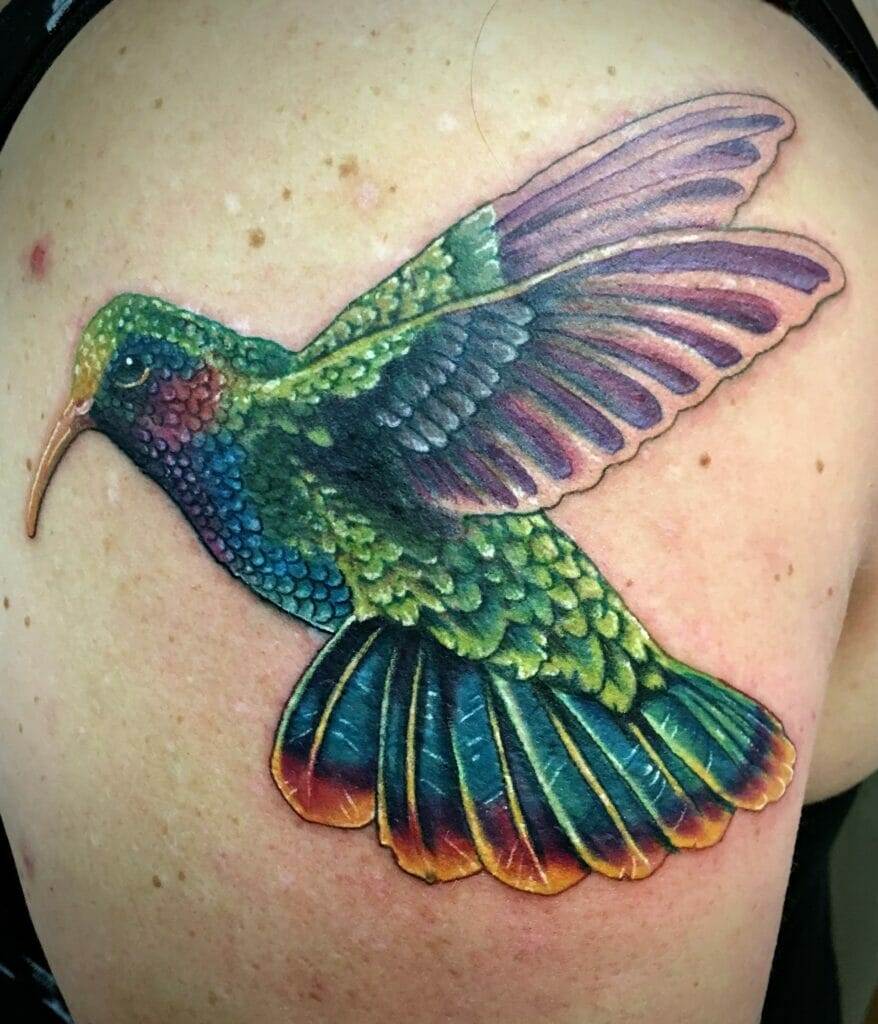
Color plays a crucial role in illustrative tattoos, as it can enhance the overall design and evoke specific emotions or moods. Different colors have different meanings and associations, and tattoo artists use this knowledge to create visually striking and impactful tattoos.
Warm colors such as reds, oranges, and yellows are often associated with energy, passion, and warmth. They can be used to create a sense of vibrancy and intensity in a tattoo design. Cool colors such as blues, greens, and purples are often associated with calmness, tranquility, and spirituality. They can be used to create a sense of serenity or evoke a specific mood.
Tattoo artists also use color to create depth and dimension in illustrative tattoos. By using shading and blending techniques, they can create the illusion of three-dimensionality and make the tattoo design appear more realistic or artistic.
The Process of Creating an Illustrative Tattoo
The process of creating an illustrative tattoo typically involves several steps, from the initial consultation to the final product. Here is an overview of what to expect during each step:
1. Consultation: During the consultation, you will meet with the tattoo artist to discuss your ideas, preferences, and any specific elements or symbols you want to incorporate into your design. The artist will provide guidance and suggestions based on their expertise and help you refine your vision.
2. Design: After the consultation, the artist will create a preliminary design based on your input. This may involve sketching by hand or using digital tools to create a more detailed representation of the final tattoo. You will have the opportunity to review and provide feedback on the design before it is finalized.
3. Stencil: Once the design is approved, the artist will create a stencil of the tattoo. This stencil will serve as a guide for the actual tattooing process and ensure that the design is applied accurately and proportionally to your skin.
4. Tattooing: The tattooing process itself can take several hours or multiple sessions, depending on the size and complexity of the design. The artist will use a tattoo machine to apply ink to your skin, following the lines and shading of the stencil. They will work carefully and methodically to ensure precision and minimize discomfort.
5. Touch-ups: After the initial tattooing session, it’s common for some areas of the tattoo to require touch-ups or additional shading. This is normal and part of the healing process. The artist will schedule a follow-up appointment to address any necessary touch-ups and ensure that the tattoo looks its best.
The Healing and Aftercare of Illustrative Tattoos
Proper aftercare is essential for ensuring that your illustrative tattoo heals properly and maintains its vibrancy over time. Here are some tips for taking care of your tattoo:
1. Follow your artist’s instructions: Your tattoo artist will provide specific aftercare instructions tailored to your tattoo. It’s important to follow these instructions carefully to avoid complications or damage to your new tattoo.
2. Keep it clean: Gently wash your tattoo with mild soap and warm water, using your hands or a clean cloth. Avoid scrubbing or using harsh products that can irritate the skin.
3. Moisturize regularly: Apply a thin layer of fragrance-free, non-comedogenic moisturizer to keep your tattoo hydrated and prevent dryness or itching. Avoid petroleum-based products, as they can clog pores and hinder the healing process.
4. Avoid direct sunlight: Protect your tattoo from direct sunlight, as UV rays can fade the colors and cause damage to the skin. If you need to be in the sun, apply a broad-spectrum sunscreen with a high SPF to your tattoo.
5. Avoid swimming and excessive sweating: Avoid swimming in pools, hot tubs, or natural bodies of water until your tattoo is fully healed. Excessive sweating can also hinder the healing process, so avoid intense physical activity or saunas during this time.
6. Be patient: It takes time for a tattoo to heal completely. Be patient and avoid picking at scabs or scratching the tattooed area, as this can lead to scarring or color loss.
The Impact of Illustrative Tattoos on Mental Health and Self-Expression
Illustrative tattoos can have a profound impact on mental health and self-expression. For many people, getting a tattoo is a way to reclaim their bodies and assert their autonomy. It can be a form of empowerment and a means of expressing their true selves.
Tattoos can also serve as a source of comfort and healing for individuals who have experienced trauma or loss. They can provide a sense of closure or act as a reminder of strength and resilience. Some people choose illustrative tattoos as a way to commemorate loved ones who have passed away, carrying their memory with them wherever they go.
Moreover, the process of getting a tattoo can be therapeutic in itself. It allows individuals to take control of their bodies and make choices that reflect their values and desires. The act of being tattooed can also release endorphins, which are natural painkillers and mood boosters.

The Endless Possibilities of Illustrative Tattoos
Illustrative tattoos offer endless possibilities for self-expression, creativity, and personal growth. They allow individuals to showcase their unique personalities, beliefs, and experiences through intricate and visually stunning works of art on their skin.
Whether it’s a small symbol with deep meaning or a large-scale piece that tells a story, illustrative tattoos have the power to evoke emotions, spark conversations, and create connections. They can serve as reminders of personal growth, sources of comfort and healing, or simply beautiful pieces of art that bring joy and inspiration.
As the popularity of illustrative tattoos continues to grow, so does the appreciation for this unique art form. Tattoo artists are pushing the boundaries of creativity and innovation, constantly finding new ways to captivate and inspire their clients. With each new tattoo, a new chapter is written in the ever-evolving history of illustrative tattoos.

